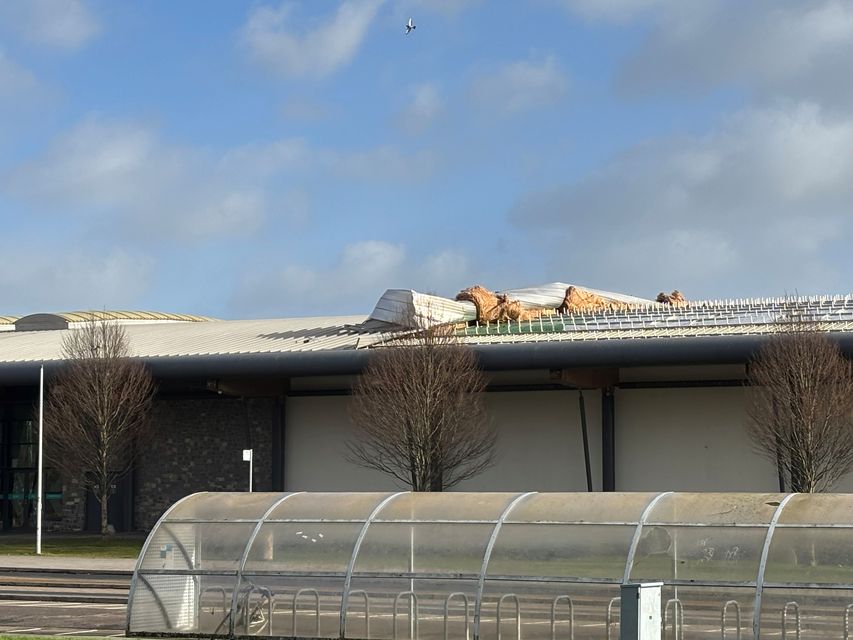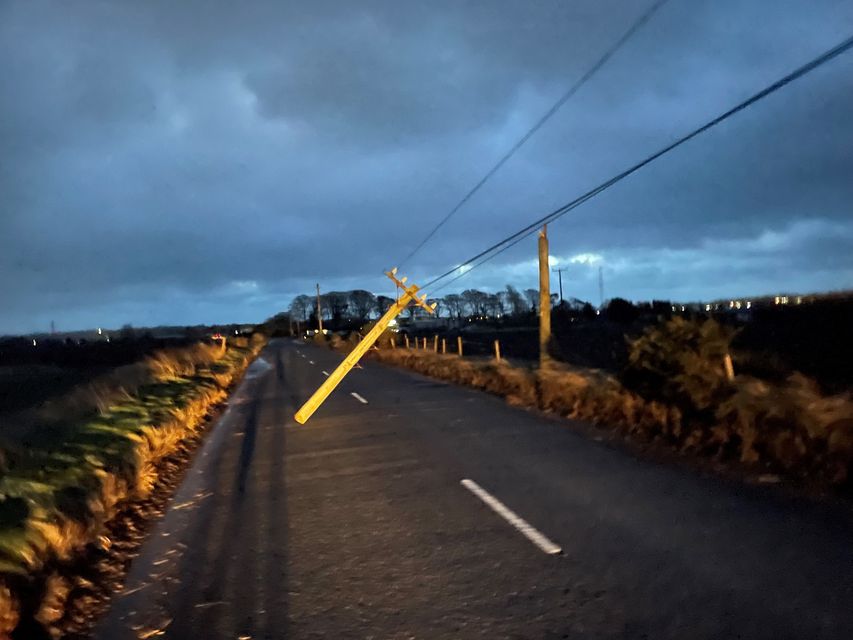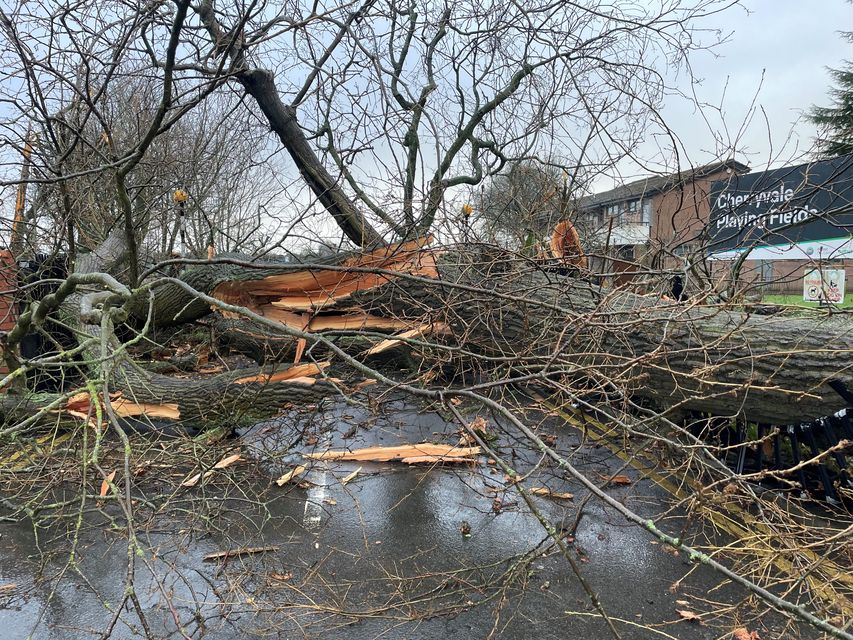Thousands of people have been left without power and roads have been blocked after Storm Eowyn battered Northern Ireland.
At its peak, more than 280,000 homes and businesses in the region were left without power and hundreds of trees felled during the storm, causing damage to properties and infrastructure.
The number of properties without power has reduced to around 250,000 as of Friday evening, but it could take up to 10 days to reconnect all those affected.
Police said it could take days to assess the full impact of the storm damage, which will emerge as authorities focus on clean-up efforts.
The Department of Infrastructure said there are more than 1,800 fallen trees, branches and other debris blocking roads, adding that it would take time to clear and reopen roads.
The strongest gust of wind recorded on Friday was 92.2mph at Killowen in Co Down.
Damage caused to the roof of Bangor Aurora Leisure Centre in Co Down (Rebecca Black/PA)
A Met Office red warning that covered the whole region from 7am lifted at 2pm, while a yellow-level snow-ice warning came into effect from 7pm and remains in place until 10am on Saturday.
Schools, colleges, courts and many shops were closed on Friday while some health appointments were postponed. Public transport was suspended during the top-level red warning for wind.
Dozens of flights were cancelled at Belfast International and Belfast City airports.
The Aurora Leisure Centre in Bangor, Co Down, sustained significant damage to its roof, and several large trees crashed down in Cyprus Avenue, a tree-lined street in east Belfast made famous by a Van Morrison song.
NIE Networks activated its emergency plans in response to the storm, and efforts to restore power have commenced following the end of the red weather warning.
At 3pm on Friday, there were around 283,000 customers without power in the region.
A broken telegraph pole in Blaris Road, Co Antrim (Jonathan McCambridge/PA)
Alex Houston, network operations manager for NIE Networks, urged people to stay clear of any damaged equipment or broken lines.
“Where trees have fallen they may have impacted on a power line even if damage isn’t immediately obvious, so please look out for power lines and, if in doubt, stay clear,” he said.
“We will only be able to begin to mobilise our crews when the red alert passes.
“At that stage we will be focusing on making the network safe but our plea is for everyone to remain vigilant and clear of any electricity lines.”
In advance of the storm, police said Friday was expected to have the strongest winds in the region since the Boxing Day storm in 1998, which caused widespread disruption.
A fallen tree at the Cherryvale playing fields in Belfast (David Young/PA)
Earlier, First Minister Michelle O’Neill and deputy First Minister Emma Little-Pengelly urged people to stay at home until the storm subsided.
“The scale of the storm, the level of wind that we’ve experienced across the island … is something that’s never been seen before,” Ms O’Neill told BBC Radio Ulster.
Ms Little-Pengelly described it as a “very serious storm”.
Police warned people to be cautious emerging after the storm lifted, as structures could be weakened after strong gusts.
Assistant Chief Constable Davy Beck, who is in charge of the storm response operation, said on Friday evening “we are still not out of the potential risks in respect of this storm”.
“Police have received in the region of 2,000 calls for service so far today, which is about 50% above what we would normally expect to receive on a normal Friday,” he said.
“Many roads right across Northern Ireland do continue to be impassable, with fallen trees debris and power lines down.”
He said there were no reported injuries of officers or their colleagues at other agencies as they responded to incidents.
He added: “We’re only now starting to see the number of calls start to rise in respect of impacts, concerns for safety, and indeed, more and more reports in respect of roads blocked and issues as a consequence of that.
“So I think it’s going to be a number of days before we can fully understand the full impacts of this storm, but certainly this was a severe storm.”


